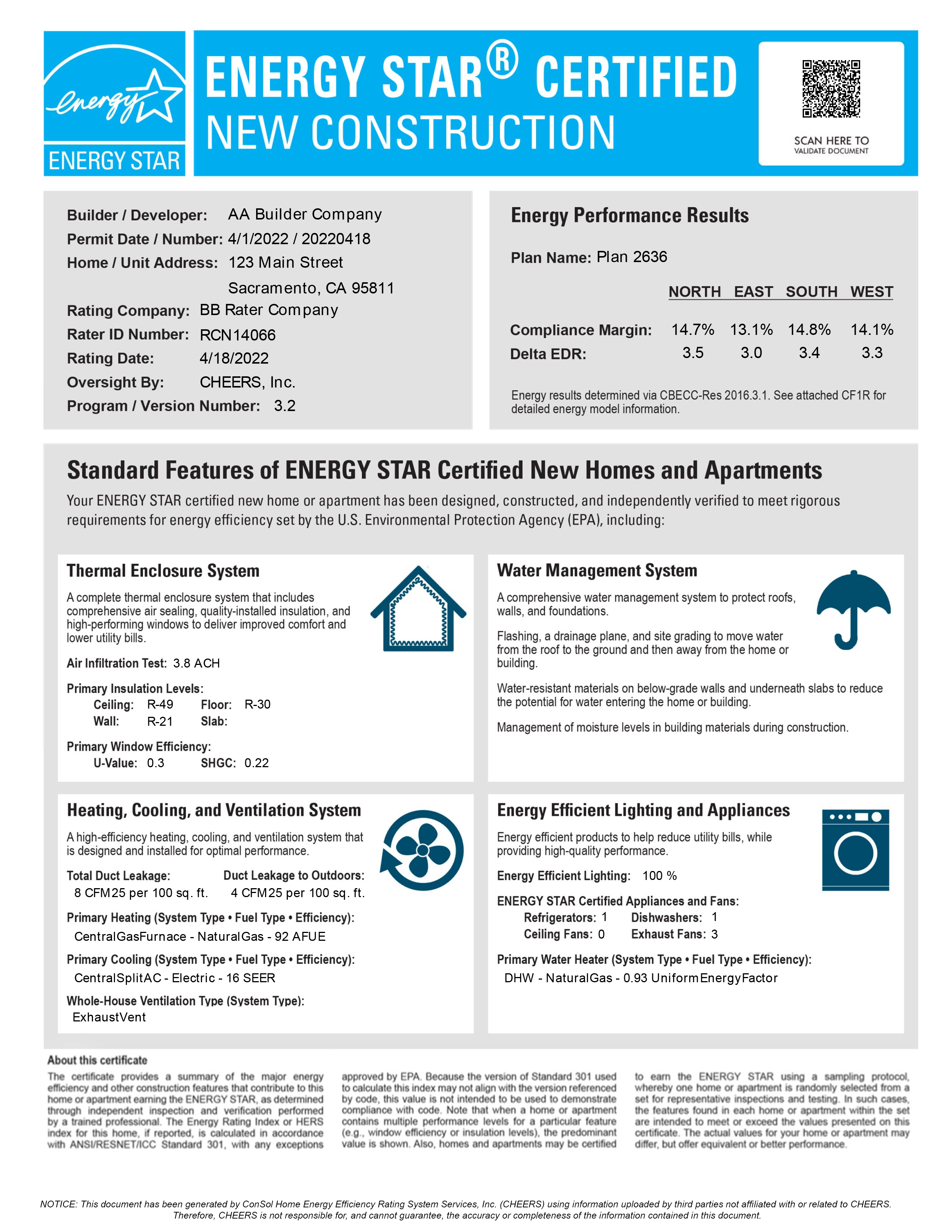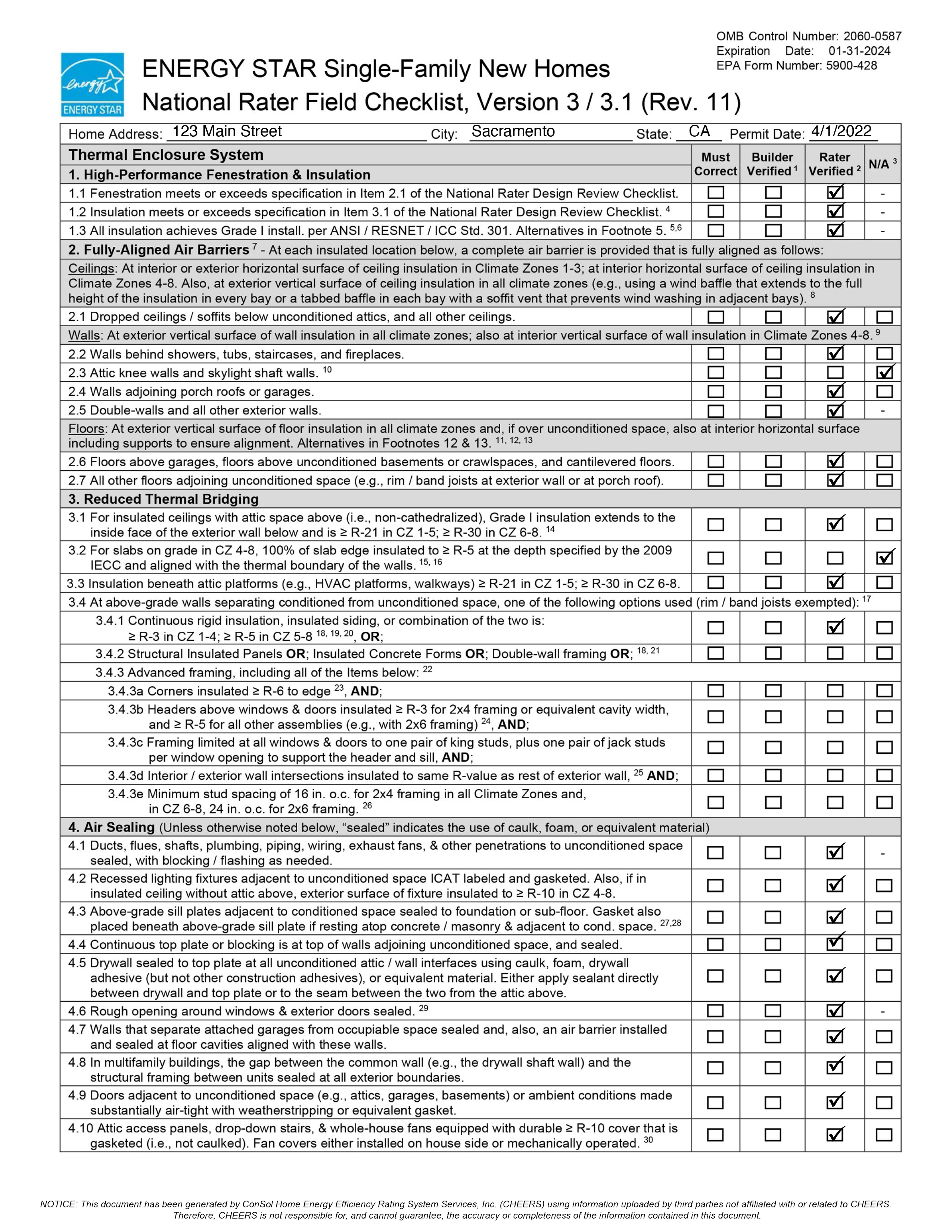ENERGY STAR® for California homes
ENERGY STAR certified homes are designed and built better from the ground up. HERS Raters can inspect, test and certify ENERGY STAR homes through CHEERS, an EPA recognized Home Certifying Organization.
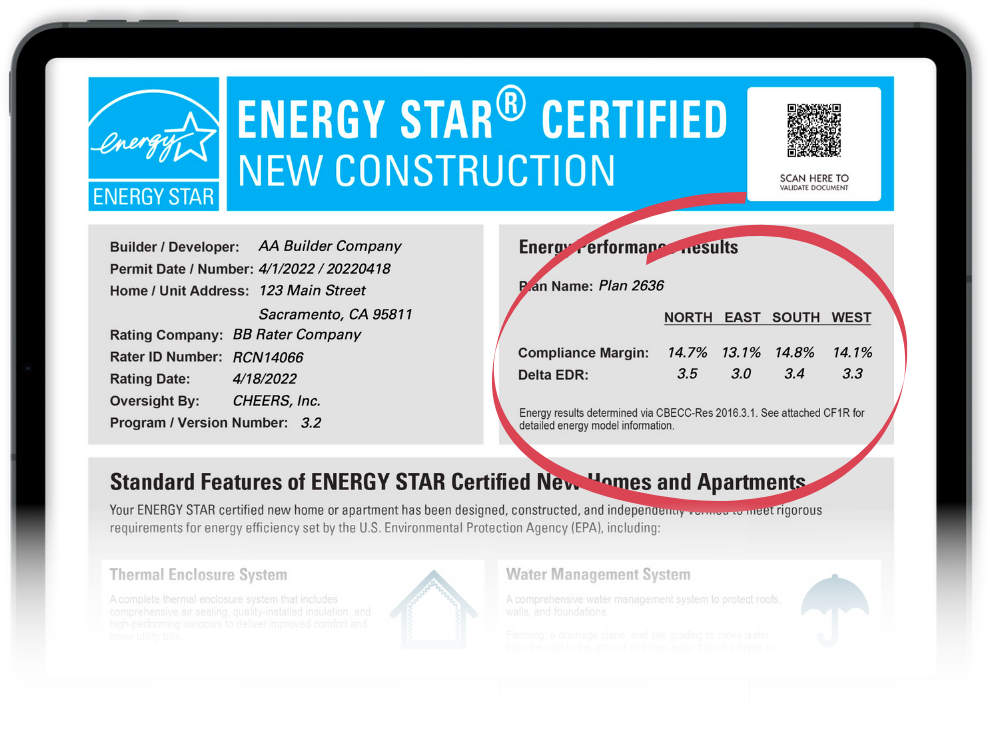

ENERGY STAR certified homes in California
ENERGY STAR homes save energy, save money, and help protect the environment. A California ENERGY STAR certified home meets the California ENERGY STAR requirements set by the Environmental Protection Agency (EPA). These requirements include:
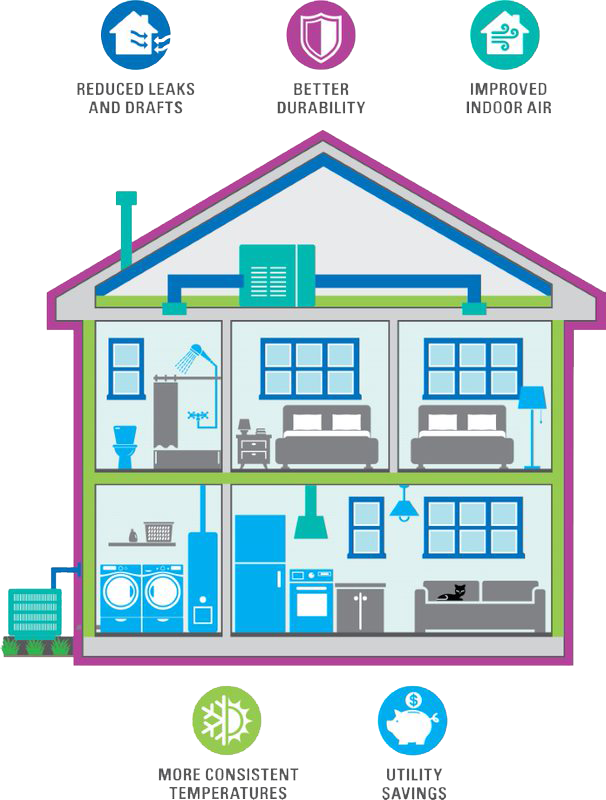
- Energy modeled savings – A compliance margin of 10%+ or delta EDR of 3+ points calculated by CEC approved compliance software.
- High-performance components – Energy efficient windows, insulation, and HVAC equipment are installed and verified in ENERGY STAR homes.
- Designed systems – Equipment and ductwork are sized and installed correctly to maximize comfort and performance. Ventilation and filtration systems are calibrated to reduce indoor air pollutants.
- Independent verification – Detailed insulation, air barrier, HVAC equipment, duct leakage, and exhaust air inspections are performed by HERS Raters to verify the ENERGY STAR Design Review and Field checklists.
Federal tax credits are available for ENERGY STAR and Zero Energy Ready Home participation
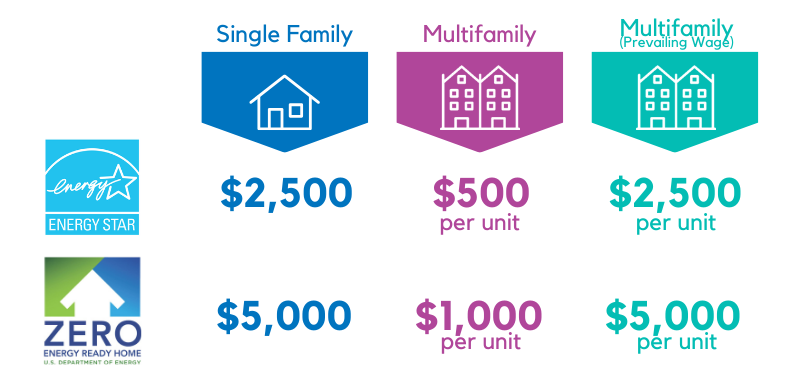

The ENERGY STAR Certification Process
The ENERGY STAR certification process begins at the design stage of the home. There are three critical role-players in the ENERGY STAR program.
ENERGY STAR documentation and reporting
CHEERS provides the central documentation and certification hub for the California ENERGY STAR program. HERS Raters record their ENERGY STAR inspection and verification information within the CHEERS registry. At project completion, an ENERGY STAR certification PDF package is available for download and handoff to the builder containing:
California’s top production builders participate in the ENERGY STAR program through CHEERS!


Frequently asked questions
ENERGY STAR is a joint partnership program of the U.S. Environmental Protection Agency and the U.S. Department of Energy that helps businesses and individuals save energy and protect the environment through energy-efficient products, homes, and buildings.
Any single-family home or unit in a multifamily building can earn the ENERGY STAR label. This includes traditional site-constructed homes as well as log homes, modular homes, systems-built homes, and HUD-code manufactured homes. EPA has developed three complementary ENERGY STAR programs to provide certification to newly constructed residential homes and buildings:
- Single-family homes, duplexes, and townhouses can earn ENERGY STAR certification through the Single-Family New Homes program. Visit the ENERGY STAR Single-Family New Homes program webpage for information about program requirements..
- Multifamily units / buildings and townhouses, can earn ENERGY STAR certification through the Multifamily New Construction program. Visit the ENERGY STAR Multifamily New Construction program webpage for information about program requirements.
. - Manufactured homes can earn ENERGY STAR certification through the Certified Manufactured Homes program. Visit the ENERGY STAR Manufactured New Homes program webpage for information about program requirements.
Please review the ENERGY STAR Decision Tree to determine which program is appropriate for your project.
Verification of a home’s energy efficiency by a third-party rater is mandatory for earning the ENERGY STAR label. There are two paths to certify a home to earn the ENERGY STAR. The Prescriptive Path is based on a predefined package of improvements, while the Performance Path is based on a customized package of upgrades. The California Program Requirements define the core energy efficiency specifications for both the Prescriptive and Performance Paths. See the California Program Requirements.
Yes. ENERGY STAR is the new pathway to achieve the $2,500 per home 45L tax credit.
For homes and units acquired on or after January 1, 2023, the base level tax credit is specifically tied to ENERGY STAR certification for single-family, multifamily, and manufactured homes. This tax credit has been extended through 2032.
An additional $2,500 credit ($5,000 total) is available for homes certified to DOE’s Zero Energy Ready (ZERH) Program, of which ENERGY STAR certification is a prerequisite.

Footnote 11 is important and defines the plan approval date as follows:
The ‘plan approval date’ is the date that a jurisdiction approves a home plan and its efficiency features for use on a specific lot or tract. The Rater may define the ‘permit date’ as either the date that the permit was issued or the date of the contract on the home. In cases where permit or contract dates are not available, Providers have discretion to estimate permit dates based on other construction schedule factors. These assumptions should be both defensible and documented. As an exception, if a new plan is added to a specific tract’s existing plan set and the new plan is subject to the same version of the energy code as the existing plan set, then the ‘plan approval date’ is considered to be the existing plan set’s original plan approval date.
Further guidance has been provided by the EPA as posted in a recent Policy Record entry:
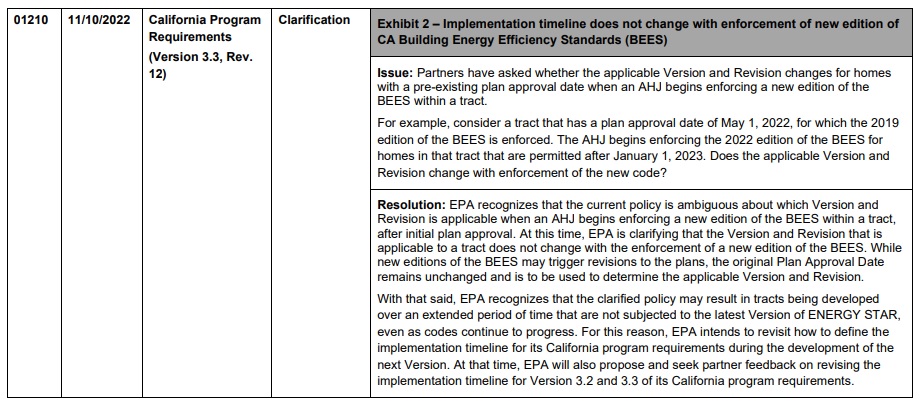
Home Certification Organizations (HCOs) are independent oversight organizations recognized by EPA to implement the ENERGY STAR program. The EPA has a formal application and review process through which an applicant must demonstrate that it meets the program’s eligibility criteria and has the capability, competencies, and proper controls to implement an ENERGY STAR certification program.
CHEERS is recognized by the EPA as an ENERGY STAR HCO in California.
For builders and homes participating in the ENERGY STAR program, Raters complete the electronic ENERGY STAR verification checklists in the CHEERS Registry. When complete, the Rater downloads an ENERGY STAR certification package and ENERGY STAR label. CHEERS reports ENERGY STAR verified homes directly to the EPA.
Yes. HERS Raters must first complete ENERGY STAR training prior to verifying homes or registering any ENERGY STAR documentation within the CHEERS Registry. ENERGY STAR training is available through CHEERS’ online learning platform. Raters may also provide CHEERS with proof of prior ENERGY STAR training they have completed.
CHEERS is an EPA approved ENERGY STAR training provider.
HERS Raters field verify items on an ENERGY STAR checklist in addition to their normal CA energy code testing. Here’s how to get started in the CHEERS Registry:
- Sign into your CHEERS account
- Navigate to the project you wish to ENERGY STAR certify & click the blue ESR button
- Input and verify all required information – the form will show a green Pass status when complete
- Sign the ENERGY STAR form
- Download the ENERGY STAR certification package
Review these steps in the tutorial video here.
Upload the XML energy file normally used for CA energy code compliance. The same file uploaded for CF1R registration can be used for ENERGY STAR qualification.
If ENERGY STAR participation is selected during energy file upload, the CHEERS Registry automatically runs that file through a new CBECC-Res simulation to verify ENERGY STAR efficiency requirements. The ENERGY STAR CF1R output is immediately available for your review.
Here’s how to get started:
- Within the CHEERS app, choose the project type you wish to upload from the drop down menu
- Click import and choose the XML file(s) you would like to upload
- Check the ENERGY STAR box
- Click “Sign & Complete”
Review the steps in the YouTube video tutorial.
The EPA has several great frequently ask questions sites you can review:
EPA FAQs on the ENERGY STAR program for building professionals
EPA FAQs on the 45L tax credit
EPA FAQs on the ENERGY STAR program for homeowners



